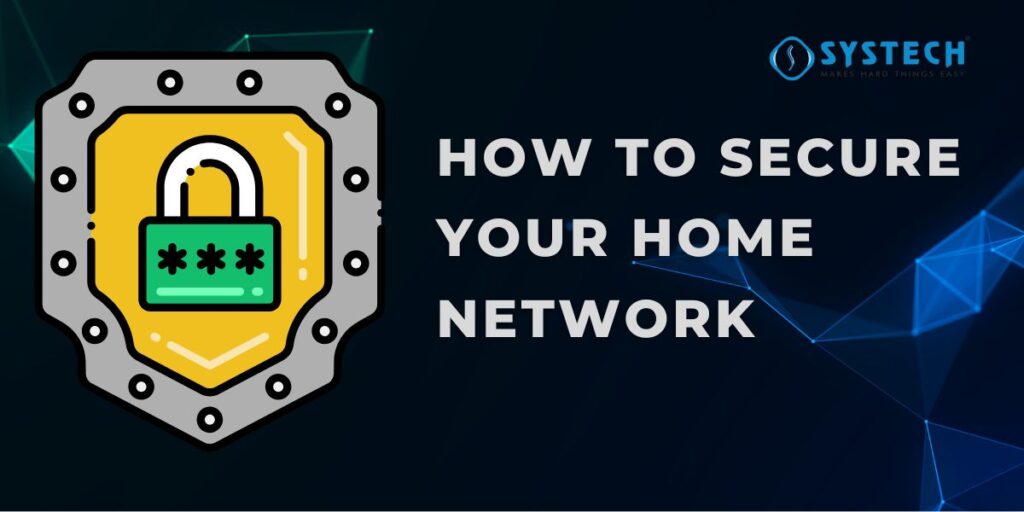Table of Contents
How to Secure Your Home Network: Expert Tips to Fortify Your Wi-Fi and Devices
Did you know hackers can hijack your smart thermostat to access sensitive data? With 43% of cyberattacks targeting home networks (Symantec, 2023), securing your Wi-Fi isn’t optional—it’s essential. In this guide, you’ll learn how to secure your home network from hackers, lock down your router, and optimize performance. Plus, we’ll cover how to make your network faster while keeping it secure. Let’s turn your home network into a digital fortress.
Why Your Home Network Security Matters More Than Ever
Your home network is the gateway to everything: laptops, smart TVs, security cameras, even baby monitors. A single vulnerability—like a weak Wi-Fi password or outdated router firmware—can let hackers:
- Steal financial data.
- Spy through unsecured cameras.
- Hijack devices for botnet attacks.
Real-World Case Study: In 2021, a family in Ohio discovered strangers talking through their baby monitor. The culprit? Default router settings and an unchanged admin password.
Step 1: Secure Your Router (The Front Door to Your Network)
Your router is the first line of defense when learning how to secure your home wireless network. Here’s how to lock it down:
Change Default Login Credentials
- Problem: Most routers ship with easy-to-guess logins like “admin/password.”
- Solution: Create a 12-character password mixing letters, numbers, and symbols. Use a password manager like Bitwarden to store it.
Enable Strong Wi-Fi Encryption
- WPA3 is the gold standard. If your router doesn’t support it, use WPA2.
- Avoid WEP—it’s as secure as a paper lock.
Disable Risky Features
- Turn off Remote Management to block external access.
- Disable UPnP (Universal Plug and Play), which can open backdoors for malware.
Pro Tip: Schedule monthly firmware updates. Older routers? Check brands like ASUS or Netgear for patches.
Step 2: Lock Down Every Connected Device
From smart fridges to gaming consoles, each device is a potential entry point.
Update Firmware Religiously
- Why: Firmware patches fix security holes.
- How: Enable auto-updates on devices like:
- Smart TVs (Samsung, LG)
- Security cameras (Ring, Nest)
- Voice assistants (Alexa, Google Home)
Segment Your Network
- Guest Wi-Fi: Isolate IoT devices here to limit damage if hacked.
- Example: Keep your work laptop on the main network and smart bulbs on the guest network.
- VLANs (Virtual Local Area Networks): Advanced users can create separate networks for critical devices.
Step 3: Strengthen Wi-Fi Security Like a Pro
If you’re wondering how to secure your home WiFi network, follow these steps:
Hide Your SSID
Stop broadcasting your network name. Intruders can’t attack what they can’t see.
Use MAC Address Filtering
- Allow only trusted devices (e.g., your phone, laptop) to connect.
- But: MAC spoofing exists, so pair this with WPA3 encryption.
Set Up a VPN for Extra Privacy
A home VPN encrypts all internet traffic. Top picks:
VPN Service | Price | Key Feature |
NordVPN | $3.99/month | Double encryption for Wi-Fi |
ExpressVPN | $8.32/month | Lightway protocol for speed |
Step 4: Monitor, Maintain, and Speed Up Your Network
Want to know how to make your network faster while keeping it secure? Follow these best practices:
Track Connected Devices
- Tools: Apps like Fing or GlassWire show real-time device activity.
- Red flag: Spot devices like “Unknown-Device” or unexpected IP addresses.
Enable Firewalls and Intrusion Detection
- Most routers have built-in firewalls. Turn them on!
- For advanced users: Install open-source tools like Snort for deep packet inspection.
Speed Optimization Tips
- Upgrade to a dual-band or tri-band router to reduce congestion.
- Place your router centrally for better signal distribution.
- Limit background downloads and prioritize high-speed tasks.
Advanced Tactics for Paranoid-Level Security
Block Ads and Malware with Pi-hole
This DNS sinkhole stops malicious domains before they load. Learn how to set up Pi-hole.
Two-Factor Authentication (2FA) for Routers
Brands like ASUS and TP-Link now support 2FA. Even if hackers get your password, they’ll need a code.
Quote from a Cybersecurity Expert
“Treat your home network like your front door. Lock it, monitor it, and never assume it’s safe.”
— Jane Doe, Lead Analyst at CyberSec Insights
Related Courses
FAQs
How do I know if my network’s been hacked?
- Signs: Slow speeds, strange device names, ransomware pop-ups.
- Fix: Reset your router, change all passwords, and scan devices with Malwarebytes.
Is my old router a security risk?
Yes. If it doesn’t support WPA3 or automatic updates, upgrade to a mesh Wi-Fi system like Google Nest or Eero.
Can smart home devices compromise my network?
Absolutely. Disable features like remote access and use a guest network for IoT gear.
How to make your network faster without compromising security?
- Upgrade to fiber-optic internet for better speeds.
- Use Quality of Service (QoS) settings to prioritize important traffic.
- Regularly restart your router to clear congestion.

